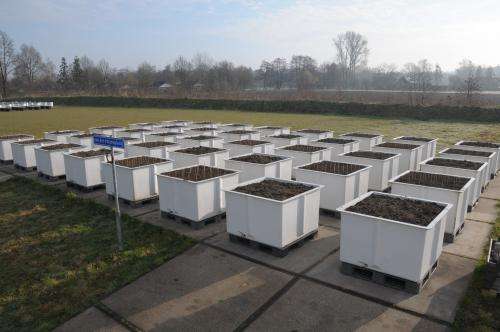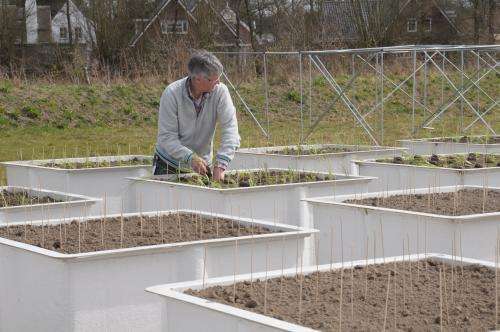Research on ecosystems of the future has started

What will happen when a plant moves to higher latitudes driven by climate change, potentially leaving behind friends and foes? Will it outcompete local plants, will originally interacting species become re-united, or do we get novel communities and ecosystems? This will be studied by professor Wim van der Putten of the Netherlands Institute of Ecology (NIOO-KNAW) with a prestigious European grant of two million Euros. His research aims to enhance predictions of our nature's future in a warming world. The first experiment already began when the Netherlands' future king personally planted two species in the 'ecosystems of the future'.
How will nature look like in the near future, and how stable will it be? Because of a changing climate, southern species are now able to settle in more northerly parts of Europe. New species are regularly being found, however, although they do not all arrive at the same time. For example, plants with light seeds can cover a distance in a couple of days, whereas this same travel might take decades for some soil organisms. Even if a plant's enemies, such as small herbivores or pathogens, shift their ranges, they may not easily locate their favourite host.
"You could compare it to a theatre company where the actors are not travelling to the next stage all together, but separately by their own means of transport," visualises soil ecologist Wim van der Putten. "It really is the question if all actors arrive in time at the new theatre, as well as if they perform the same play or a totally new one – together with the local actors."

Those plants moving up north may be temporarily released of their enemies and pathogens, as Van der Putten has demonstrated already. Therefore, chances are higher that some plants become 'invaders' in their new territory. They simply become 'too successful'. The opposite situation is also possible, for example when plants lose contact with beneficial fungi. With his ERC Advanced Grant for excelling scientists – meant to stimulate innovation in the field of research – he is now trying to unravel the consequences of range shifts for biodiversity and stability of the invaded ecosystems. "This new research project enables us to study how aboveground and belowground organisms are meeting up with their host plants in the new range, how long this takes, and if the original communities of plants, friends and enemies are restored."
Until now, predictions are based on species shifts without taking their 'ecological partners' into account. Van der Putten: "I expect that our research makes forecasts more realistic. On top of that I hope to understand what has taken place in the past millions of years during the interglacial periods."
As a first experiment the researchers have just built forty mini-ecosystems. Northern and Middle European plant species are planted in Northern and Middle European soils, including soil life. They will assess the response of Dutch ecosystems to more southern influences. The southern plants are already present, but the southern soil organisms are still new to the country. The plants are pairs of closely related species from riverine habitats, such as the native brown knapweed and spotted knapweed. The same applies to salsify and Sisymbrium species.
After one year the 'ecosystems of the future' will be exposed to an experimental extreme weather event. It enables the research team to study stability and resilience of both the communities and the nutrient cycles in the mini-ecosystems. The results will provide insight in the measures that may be needed to support the transition from our current to future nature.
During last week's 'big planting day' His Royal Highness the Prince of Orange planted some brown and spotted knapweed plants into the ecosystems of the future. The crown prince – to be crowned king of the Netherlands in only a few days – visited NIOO that day for his last meeting as a chair of the national Advisory Board on Water. The research on the nature of the future can now really start!
Provided by Netherlands Institute of Ecology















